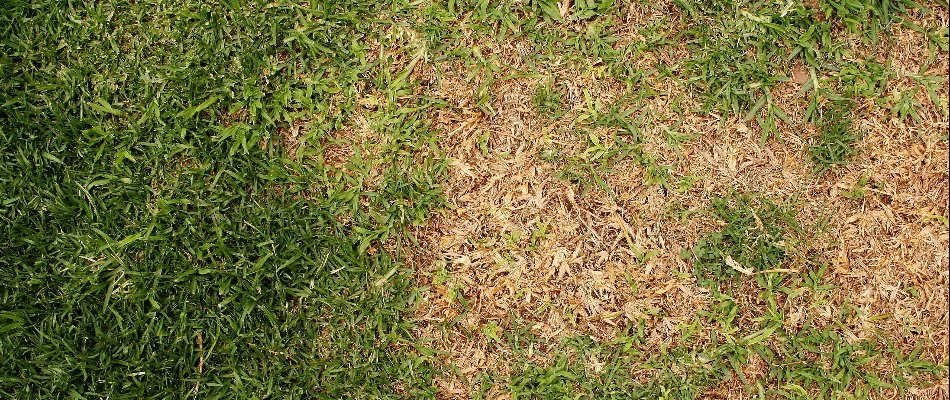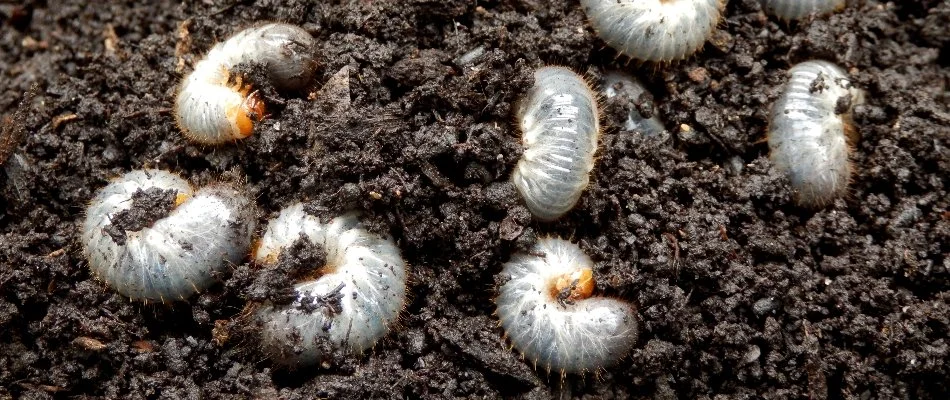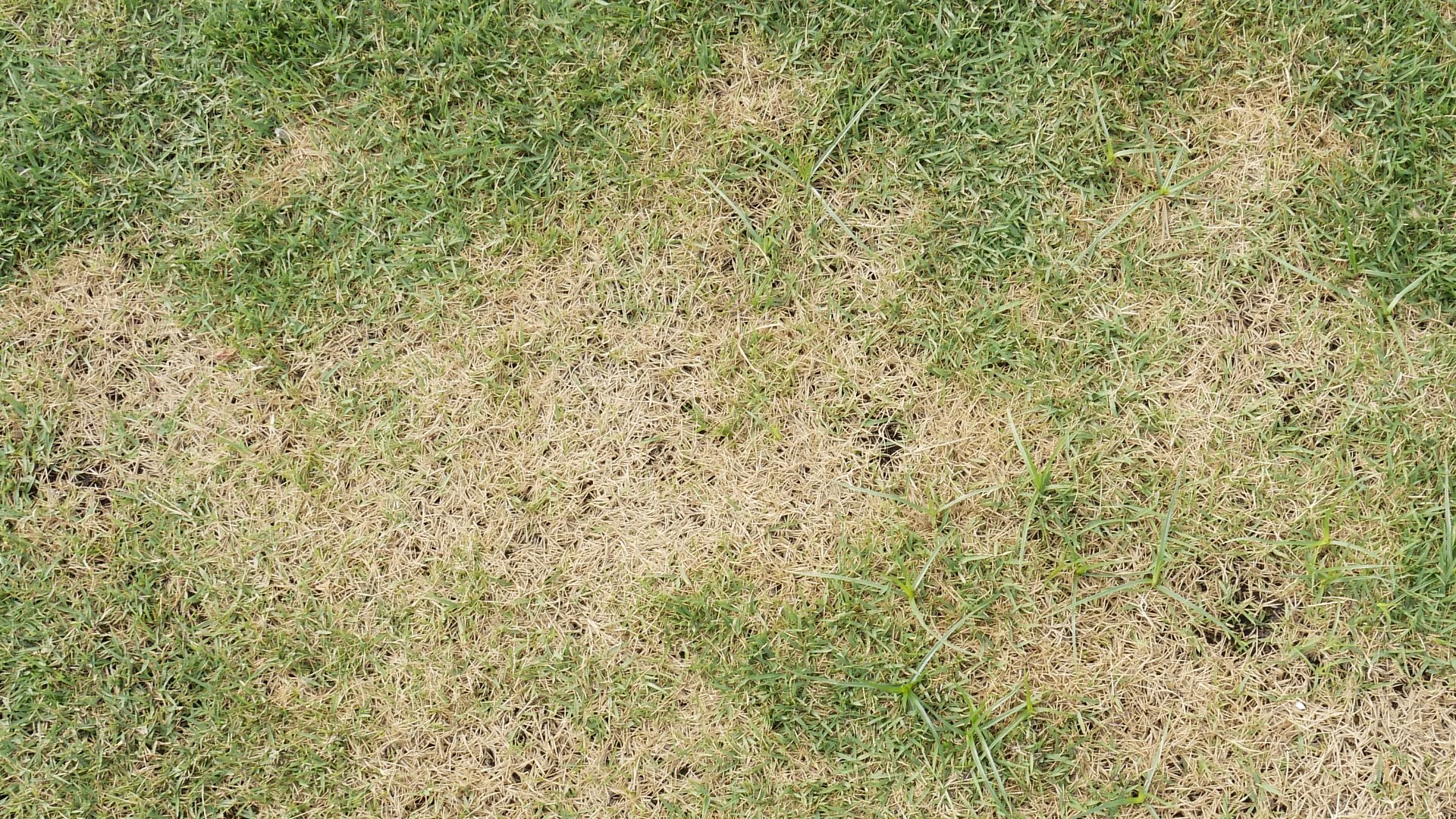Maintaining a lush lawn on your property in Texas can sometimes be challenging. For many property owners, no matter what they do, there always seem to be brown spots dragging down the appearance of their once-green lawns. Brown spots can result from different things, such as overfertilization, dehydration, lawn disease, or pests. Overfertilization, particularly with excessive nitrogen, can scorch the grass, resulting in unsightly brown patches. Dehydration, whether from inadequate watering or hot weather conditions, can leave your lawn parched and browned. Brown patch, a fungal disease, manifests as circular areas of brown grass. Additionally, lawn-damaging insects like grubs can disrupt the root system, leading to browning. Identifying and addressing these issues promptly is crucial for restoring your lawn's vibrancy.
1. Overfertilization

If you've noticed your lawn turning an unsightly shade of brown, overfertilization could be the culprit. Overfertilization occurs when you apply too much fertilizer to your lawn in an attempt to make it greener and healthier. While fertilizers can be beneficial, excess nutrients can have detrimental effects on your grass.
When you overfertilize, you essentially overwhelm your grass with nutrients it cannot absorb or utilize efficiently. A surplus of nitrogen from overfertilization can "burn" your grass. This burn effect manifests as brown or yellowish patches on your lawn. Excessive nitrogen also disrupts the natural processes of your grass, preventing it from taking in water and causing the blades to wither and turn brown.
2. Dehydration
If your lawn has started to turn brown, it might be suffering from dehydration. Dehydration in lawns occurs when they don't receive an adequate supply of water. Just like any living organism, grass needs water to survive and thrive. When your lawn doesn't get enough water, it goes into survival mode. It conserves its resources by slowing down its growth and, in extreme cases, turning brown.
Inadequate watering can lead to shallow root development, making your grass even more vulnerable to drought conditions. To prevent your lawn from turning brown due to dehydration, make sure you water it deeply and consistently. Watering early in the morning or late in the evening when the temperatures are cooler helps minimize water evaporation and keep your grass green and healthy.
3. Brown Patch Lawn Disease
Another possible reason your lawn is turning brown is the presence of a fungal disease known as brown patch. Brown patch is a common lawn disease caused by the fungus Rhizoctonia solani. It tends to strike when conditions are warm and humid.
Brown patch typically appears as circular or irregularly shaped brown patches on your lawn. The affected grass blades may have lesions or dark, sunken spots. This disease attacks the grass at the crown and stems, causing it to wither and turn brown.
Brown patch is highly contagious, so if you notice these symptoms, it's crucial to address the issue promptly. To prevent and manage brown patch, avoid overwatering and try to improve air circulation.
4. Lawn Insects

Lawn insects, such as grubs, chinch bugs, and armyworms, can wreak havoc on your lawn, causing it to turn brown in patches. These tiny critters feed on grass roots and blades, disrupting the plant's ability to take in nutrients and water.
Grubs are beetle larvae that live beneath the surface of your lawn. Their voracious appetite for roots can weaken your grass, making it susceptible to browning and even dying. Chinch bugs are tiny insects that pierce grass blades and suck out the sap, leading to yellowing and browning of the grass. Armyworms, as their name suggests, can march through your lawn, munching on grass blades and causing significant damage.
If you suspect lawn insects are causing your brown patches, seek out a professional pest control service. Early detection and intervention are key to preventing further damage and restoring your lawn's lush green appearance.
Give us a call today to sign up for any of our lawn care services.
Transform your lackluster lawn into a vibrant oasis with our comprehensive range of lawn care services! Since 2005, we have served property owners in Plano, Allen, Frisco, McKinney, and surrounding areas in Texas. From rejuvenating fertilization treatments to combatting pesky lawn diseases and controlling those bothersome pests, we've got you covered. Don't let your lawn suffer any longer. Give us a call today at 972-516-0001, and let us work our magic to restore your lawn to its lush, verdant glory. Your dream lawn is just a phone call away!









Comments (0)
Thanks for your comment!
Thanks for your feedback! Your comments have been successfully submitted! Please note, all comments require admin approval prior to display.
Error submitting comment!
There is a problem with your comment, please see below and try again.